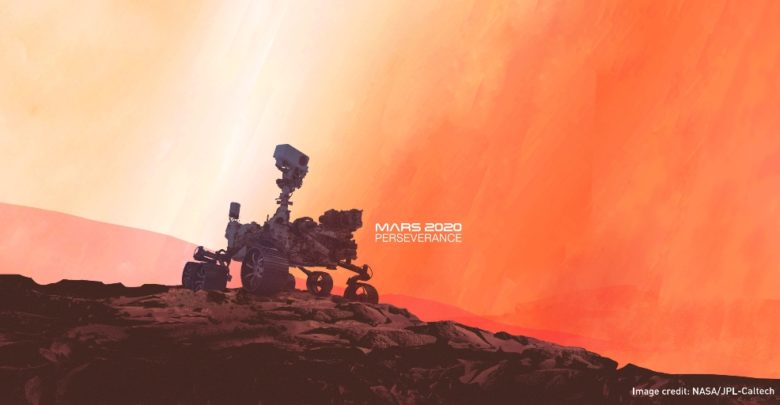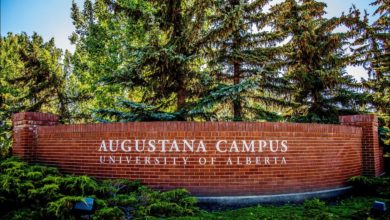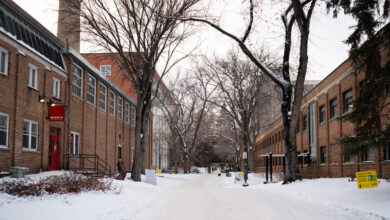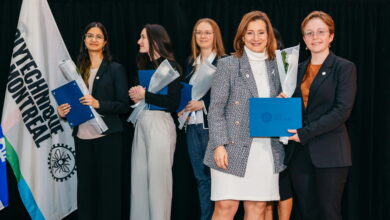 NASA
NASAVirtual webinar allowed attendees to join University of Alberta NASA sample scientist in learning about NASA’s newest Mars perseverance rover mission.
Chris Herd, a professor in the department of earth and atmospheric sciences, held a virtual webinar as part of the Science Connects Webinar series, where he explained NASA’s Perseverance rover mission and his role in it. Herd provided an overview of what the Mars rover is capable of, and why they want to bring samples back from Mars. He also shared why he became involved in the Mission and outlined his specific role on NASA’s Mars 2020 Perseverance Rover Mission.
Herd was selected in 2019 as a returned sample science participating scientist, which is a specialist in the analysis of return samples from Mars. This means he will be closely involved with the collection and caching of Martian rock core and dust samples, and their analysis once they are sent back to Earth.
The main focus of the webinar, which took place on October 9, was providing information about what the rover is capable of, and what samples are to be brought back from Mars. According to Herd, this Mars mission revolves around searching for life outside of Earth —looking for microbial biosignatures. This can be done through rover Perseverance, commonly nicknamed as Percy. He described the Perseverance rover mission as a starting point for further exploration on Mars.
“This is the first step, bringing samples back from Mars for the very first time,” he said.
Perseverance visually resembles Curiosity, NASA’s only active rover on Mars. However, Herd described that Percy comes with some advancements and improvements in comparison to previous rovers.
“What really sets this mission apart is a sample caching system,” he said. “This is an incredible piece of engineering that, after we’ve interrogated our rocks and decided we want to sample something, [will allow us to] core out a rock. Then [the collected sample] goes into a sleeve, and the sample goes into the belly of the rover to get examined.”
Perseverance also includes a CacheCam, which is a camera that looks at the sample cache. This means scientists are able to take pictures of sampled materials and sample tubes as they are being prepared for sealing, allowing a detailed record of the entire process for each sample collection.
Percy also carries SuperCam, a laser shooting camera that is able to zap rocks, allowing scientists to study Martian rocks smaller than a pencil point.
“SuperCam is a laser that can shoot rocks up to seven meters away, and as the rock is vaporized, there is a telescope on here that can see what the rock is made out of,” Herd described.
The Perseverance rover is also capable of taking a look at things below Mars’ surface.
“Perseverance carries RIMFAX, the first in situ radar to see geological features beneath the surface,” Herd explained. “It can extend the layering we see at the surface into the subsurface.”
This mission also aims to prepare for human exploration on Mars through a tool on Perseverance called MOXIE, which converts carbon dioxide into oxygen.
“It essentially breathes like a tree,” Herd said. “This is the type of thing that if you scale it up 20 times, we might send it to Mars to sit there and generate oxygen for years before humans arrive.”
Herd will lend his expertise in the analysis of Martian rocks and meteorites to choose samples that will provide information about Mars’ geological history. Through this, analysis and further exploration on the history of microbial life will be possible.
“It’s really an honour to be a part of this — it’s absolutely thrilling,” Herd said. “If you had told 13-year old Chris, who already had decided at that age that he wanted to work on Mars samples when they came back, I think he’d be a pretty excited kid.”
Herd finished off the webinar with words of encouragement for aspiring scientists.
“If there is something really exciting to you, hold onto that, and see how it connects to the universe that we’re in — see how it connects scientifically to other things.”




